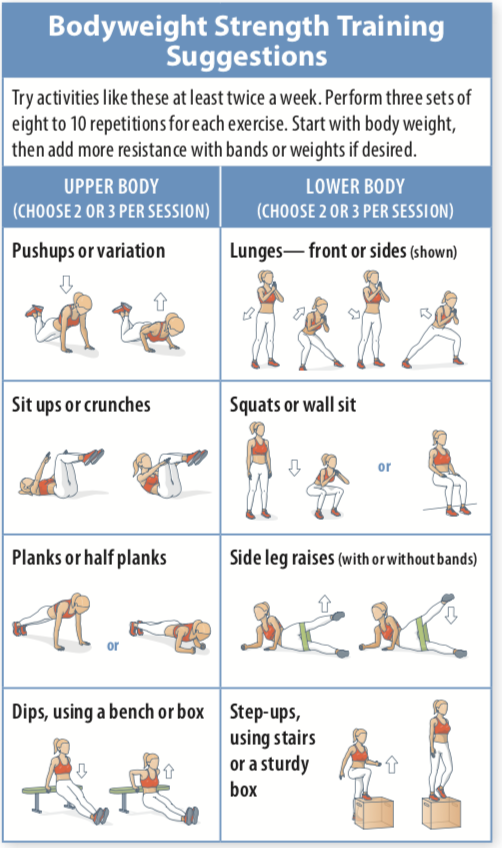While aerobic activities like walking, jogging, gardening, swimming, and playing tennis or pickleball are an important part of a healthy lifestyle, there are many reasons to add strength training to the mix. “Along with activities that strengthen the cardiometabolic system, like we see with aerobic activity, some amount of strength training is also important,” says Roger Fielding, PhD, leader and senior scientist of the Nutrition, Exercise Physiology, and Sarcopenia Team at the Human Nutrition Research Center on Aging. Research suggests even less than an hour of weightbearing exercise a week can support good quality of life now and in years to come.
Why Strength Train? Weightbearing activity helps build muscle strength and preserve muscle mass and bone density. This is especially important as people age. A loss of muscle mass, strength, and function—known as sarcopenia—is common with advancing age. These changes can decrease quality of life and increase risk of frailty, falls, and bone fracture. Low muscle mass has been associated with higher risk of cognitive decline, insulin resistance, and inflammatory marker levels.
In a recent review of 16 studies, muscle-strengthening activities were associated with a 10 to 17 percent lower risk of cardiovascular disease (CVD), cancer, diabetes, lung cancer, and death from any cause. Researchers found that not only is strength training beneficial for health, it also doesn’t require a lot of time to see positive results. Even just 30 minutes a week may lead to increased strength and health benefits. Combining strength training with aerobic activities was linked to a lower risk of all-cause, CVD, and total cancer deaths.

How to Strength Train. Strength training, also referred to as resistance training or weight training, includes any activity that provides muscles with some type of resistance. Resistance can come from a number of sources, including weights, bands, machines, or your own body weight. Although there are different recommendations from reputable organizations on duration and frequency of strength training sessions, Fielding says 30 to 60 minutes a week divided into two or more days is generally accepted guidance. “We recommend four to five strength training activities that utilize both the upper and the lower extremities,” Fielding says. He suggests performing three sets of an exercise for eight to ten repetitions (reps). “Choose a weight that has you feeling like you can’t do any more by rep eight, nine, or ten,” says Fielding.
➧ Take 30! Plan for at least 30 minutes of strength training activities per week, divided into at least 2 sessions.
➧ Seek guidance. Consider hiring someone for one or two sessions or finding an introductory program to learn how to perform strength training movements safely and effectively.
➧ Use bodyweight. No equipment is required to strength train. If you don’t want to invest in weights or join a gym, using the resistance of your own bodyweight working against gravity (as in push-ups and squats) is all you need.
➧ Train high and low. Choose exercises that work muscles in the upper body and lower body (see Bodyweight Strength Training Suggestions).
“Many people would benefit from having someone show them how to carry out a program of appropriate strength training movements,” says Fielding. He also recommends joining a reputable fitness center, like the YMCA, which generally offers introductory programs that can help people new to strength training get comfortable with it. Some organizations have special programs for older adults just starting out. Whatever your goal is for starting a strength training program, like building strength or maintaining the muscle you have to help prevent decline, results come quickly. According to Fielding, people start seeing benefits—like feeling stronger— in about two weeks, which can be a great motivator to keep with the program.
























